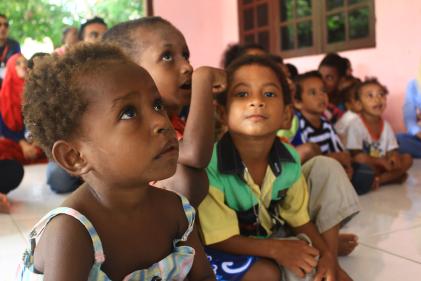By Service | 4 July, 2020

1. Introduction
To understand the subtle impact of Colish on the world, the questions arose:
- How many children are going to learn English?
- Around the world?
- In countries?
As we couldn’t find any statistics which we could use, we started to build and extract our own.
2. How many children?
In the world: 2.3 billion
Assuming the same ratio of births each year and children are defined as 0 - 17 years old:
-> 2.3e9/18 = 127.778 million children each year entering the school system.
-> In 2040 -> 150 million children entering the school system.
Resources
- Unicef states that 1 in 5 children have never been registered. https://data.unicef.org/topic/child-protection/birth-registration/
- Population of the earth (7.78 billion) is increasing at 1% (or approx 80 million children extra on top of the normal births) per year.
- Brookings https://www.brookings.edu/blog/future-development/2019/06/20/more-than-half-of-the-worlds-poor-are-children/
- Humanium https://www.humanium.org/en/children-world/.
3. Learning EN
3.1 Calculating via approximation
Assuming (see above) 127.78 million children could be entering the school system pro year.
How many children on this planet go to school?
Assuming 60% can go to schools = 127.78 e6 x 0.6 = 76 million
How many of these children are going to learn EN in their school life? 60% ?
Assuming 60% will learn to read EN = 76 e6 x 0.6 = 46 Million.
The above approximations are too low, as China and India alone have 56 million who will be going to school this year.
Annual growth statistics claim a plus of 80 million per year, https://www.worldometers.info/world-population/world-population-by-year/, but where do they get their statistics?
3.2 Calculating via country
How many are entering school per year?
Trying to calculate the number via individual countries, where we know that EN is being teached:
| Country | Number | As 1st/2nd language |
|---|---|---|
| Australia | 1 | |
| Canada | 1 | |
| China | 34698900 | 2 |
| Germany | 728300 | 2 |
| India | 22103513 | 2 |
| Indonesia | 4375000 | 2 |
| Ireland | 1 | |
| New Zealand | 1 | |
| Nigeria | 7534530 | 1 |
| South Africa | 1 | |
| UK | 810936 | 1 |
| USA | 1 | |
The above numbers have been calculated and are noted in each countries data sheet under the Resources section.
3.3 Learning English as a mother tongue?
Not yet calculated
3.4 Learning English as 2nd language
Not yet calculated
4. Visualize - Per Breath
The number of children learning English on this planet is so huge that humans cannot easily grasp the numbers. One way of visualising this is via relating to everyday things, such as having a breath.
4.1 New children per breath
Per country:
| Area / Country | Chilren per breath |
|---|---|
| Enlingua countries | 0.45 |
| Europe¹ | 0.82 |
| Minus UK¹ | - 0.07 |
| India | 2.80 |
| China | 4.40 |
| Africa | ? |
| Indonesia | 0.55 |
| Other countries /rounding up | ? |
| Pakistan | |
| Bangladesh | |
| Nigeria | 0.96 |
| —— | |
| Minimum | 10 |
¹ with the UK
4.2 Breath calculations
See the individual country.
4.2.1 Mother tongue (Enlingua)
Assumption 400 million population, yearly intake in schools 0.87747% (from DE)
- Yearly (400 m x 0.87747 % ) = 3.50988 m
- Daily ( 3.50988 m / 365 ) = 9.616 k per day
- Hourly (9616 / 24) = 400 /h
- Working hour (9616/8) = 1202. Rounding 1200
- Every second (400000000*0.87747/100/365/24/60/60) = 0.1113
- Every breath (0.113*4)= 0.45 children
- A person takes on avg. a breath every 4 seconds, so a 1 child is equivalent to 9 seconds (0.1113 x9 = 1.00) or approx 2 breaths,
4.2.2 Europe
Population in Europe = 741.4 m Assuming the same intake as DE before we get better statistics (741.4e6*0.87747/100) = 6.50556258e6
Per breath = 6.50556258e6/365/24/60/60*4 = 0.825 children
4.2.3 World
Another calculation based on a rough approximation that 80 million children, a mixture of primary and secondary school aged children, are going to start learning English this year:
Per breath = 80e6/365/24/60/60*4 = 10.1 children
5. Visualize - School Bus
Another pictural description is to visualize three well packed school buses driving past every minute.
Based on:
- an US school bus, https://www.schoolbusinfo.com/faq.asp
- a ‘full’ bus of 50 children
6 Illiteracy in children in Enlingua countries
OECD facts: Every 4th adult is illiterate. i.e. they didn’t learn it in school.
With approximately 3.5 million school entries or departures per year:
- 3.5e6*0.25 = 875k classed as illiterate.
Scaling down to every 8th adult who really do have tremendous problems, that is
- 3.5e6*0.125 = 437k per year.
Easy to remember number: 0.5 million children per year cannot do WhatsApp’ing.
7. Discredit the above
Let’s have some fun and discredit the above…
You might say…
- You are rounding numbers!
- You are cheating - You want the numbers look big!
- Lots of children live in rural areas and will not go to school!
- English is not on every childs curriculum
- Other languages are more important
- You have made a mistake somewhere…
- The numbers from XXX are all fake…
- It is all un-scientific, no peer review, etc.
Perhaps their is a logic or factual mistake, but the sheer numbers are immense. Even if you scale down from 80 million to 40 to 20 to 10 to 5 to 3 to 1 million, i.e. approximately the school intake of the UK in one year, it is still gigantic.
If it is possible to help 50% of those children to learn better, and within 50% of the time, is that not something to work for?

